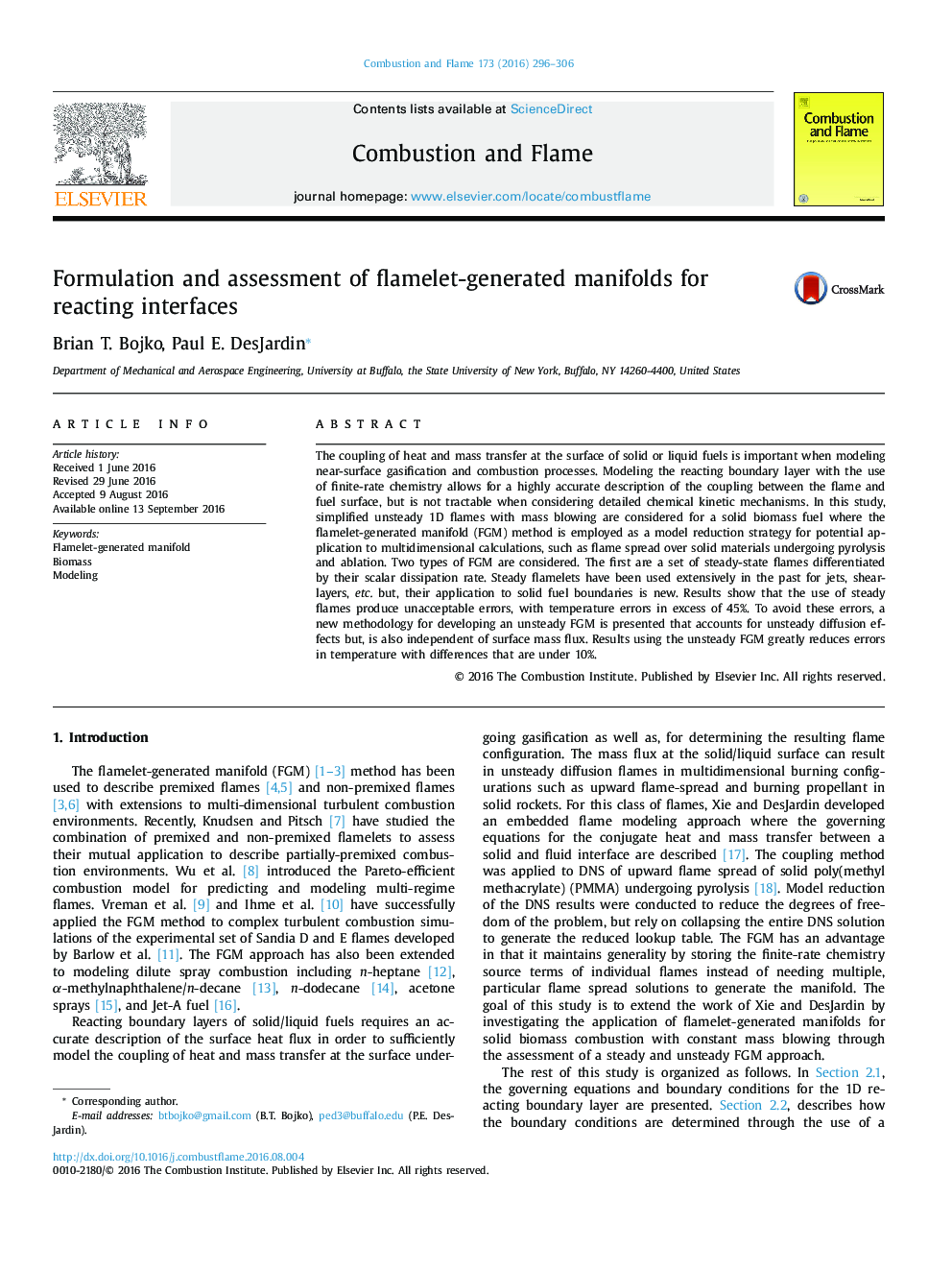| Article ID | Journal | Published Year | Pages | File Type |
|---|---|---|---|---|
| 6468373 | Combustion and Flame | 2016 | 11 Pages |
The coupling of heat and mass transfer at the surface of solid or liquid fuels is important when modeling near-surface gasification and combustion processes. Modeling the reacting boundary layer with the use of finite-rate chemistry allows for a highly accurate description of the coupling between the flame and fuel surface, but is not tractable when considering detailed chemical kinetic mechanisms. In this study, simplified unsteady 1D flames with mass blowing are considered for a solid biomass fuel where the flamelet-generated manifold (FGM) method is employed as a model reduction strategy for potential application to multidimensional calculations, such as flame spread over solid materials undergoing pyrolysis and ablation. Two types of FGM are considered. The first are a set of steady-state flames differentiated by their scalar dissipation rate. Steady flamelets have been used extensively in the past for jets, shear-layers, etc. but, their application to solid fuel boundaries is new. Results show that the use of steady flames produce unacceptable errors, with temperature errors in excess of 45%. To avoid these errors, a new methodology for developing an unsteady FGM is presented that accounts for unsteady diffusion effects but, is also independent of surface mass flux. Results using the unsteady FGM greatly reduces errors in temperature with differences that are under 10%.
